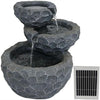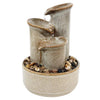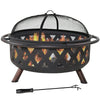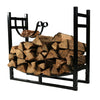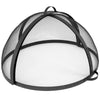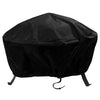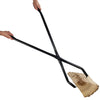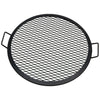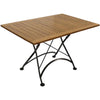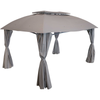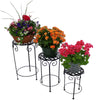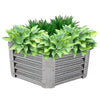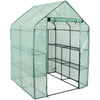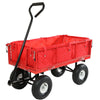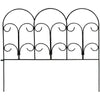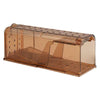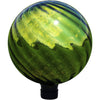During the spring and summer seasons, a raised garden bed provides the perfect place to grow beautiful blooms or a bountiful vegetable harvest. However, once summer fades into autumn and the temperature drops, it is time to prepare your garden beds for winter. Winterizing your garden beds is an important step that will help ensure they are ready for the next growing season in the spring. Follow the steps in this article to get your raised garden beds ready for the winter and ensure a solid start for next year.
What is “Winterizing” and Why Is It Important?
After a successful harvest in the fall, a gardener must turn their attention towards the coming winter months. “Winterizing” refers to the process of cleaning and covering your garden beds to ensure that your dormant plants will be able to survive the harsh weather conditions of winter. This can involve a variety of tasks including removing dead plants, mulching, planting ground cover, and more.
Step #1 Remove Dead Plants

Even when given the utmost care, some plants are not built for cold weather. Once they die away, they settle on the bottom of the garden bed and begin to decay. This can cause a variety of problems for your soil. Dead plants provide a convenient home for pests and insects and can also take away valuable nutrients from your plants that are still living. Dead plants should be removed as quickly as possible to prevent diseases from forming. The first step of winterizing should be to clear out these plants as well as any seedlings that may have dropped from the plants. If left unattended, these unwanted seeds can sprout taking up valuable space and resources in your garden bed. If your plants were healthy, they can be chopped up and used as compost. If there are any signs of disease on these plants, it’s best to simply discard them.
Step #2 Clean and Store Plant Supports
Plant supports, border fences, and plant cages will last significantly longer if they are properly cared for. As the season winds down, autumn is a good time to remove these items from your garden bed. These items should be cleaned and stored indoors in order to protect them from winter wind and rain.
Step #3 Revitalize Your Soil
Healthy soil leads to healthy plants, and fall is a great time to restore your soil’s nutrients. After you have removed any supports or fences from your garden bed. Use a rake to smooth out the soil. Next, apply a 1-inch layer of compost over the top of the soil. Over the course of the winter season, the compost will slowly break down and add vital nutrients back to the soil ensuring next year’s plants have a strong foundation.
Step #4 Keep On Growing

For most people, the growing season comes to a halt in the autumn. However, depending on the climate where you live, some hardy crops can be planted and harvested even in cooler weather. Root crops like carrots, radish, and garlic and leafy plants like cabbage, kale, and spinach can be planted in the fall and harvested several weeks later. Mini greenhouses and cold frames can also help extend your growing season by covering the garden bed.
Step #5 Plant a Cover Crop
Even if your planting season is over, growing a cover crop is a unique way to preserve your soil for next year. A cover crop is a low-growing plant like clover or rye. They are planted in the fall and their main purpose is to cover the soil over the winter before being cut back in the spring. A cover crop provides a number of benefits. First, it keeps the soil surface completely covered so there is no place for weeds or unwanted plants to take up residence in your garden bed. These plants will also take in carbon to improve the overall health of the soil while their roots grow down into the soil to break up hard soil. This helps prevent erosion.
Step #6 Add Mulch

Once you’ve revitalized your soil, adding a layer of mulch can help ensure that those vital nutrients remain in the soil where they belong. Mulch provides a protective layer over the soil and keeps rainwater from washing away the rich soil. If you don’t have mulch, you can use collected fall leaves or a tarp to keep your garden bed securely covered.
The season may be over, but a gardener’s work is never done. Taking the time to ensure that your garden bed is ready to weather the winter will certainly pay off in the spring. Whether you want to extend your growing time or simply get a headstart for the next crop, these simple tips will lead to healthier, stronger plants.
Once spring arrives, check out our How to Prepare a Garden Bed for Healthy Plants article to kick off a new season!

